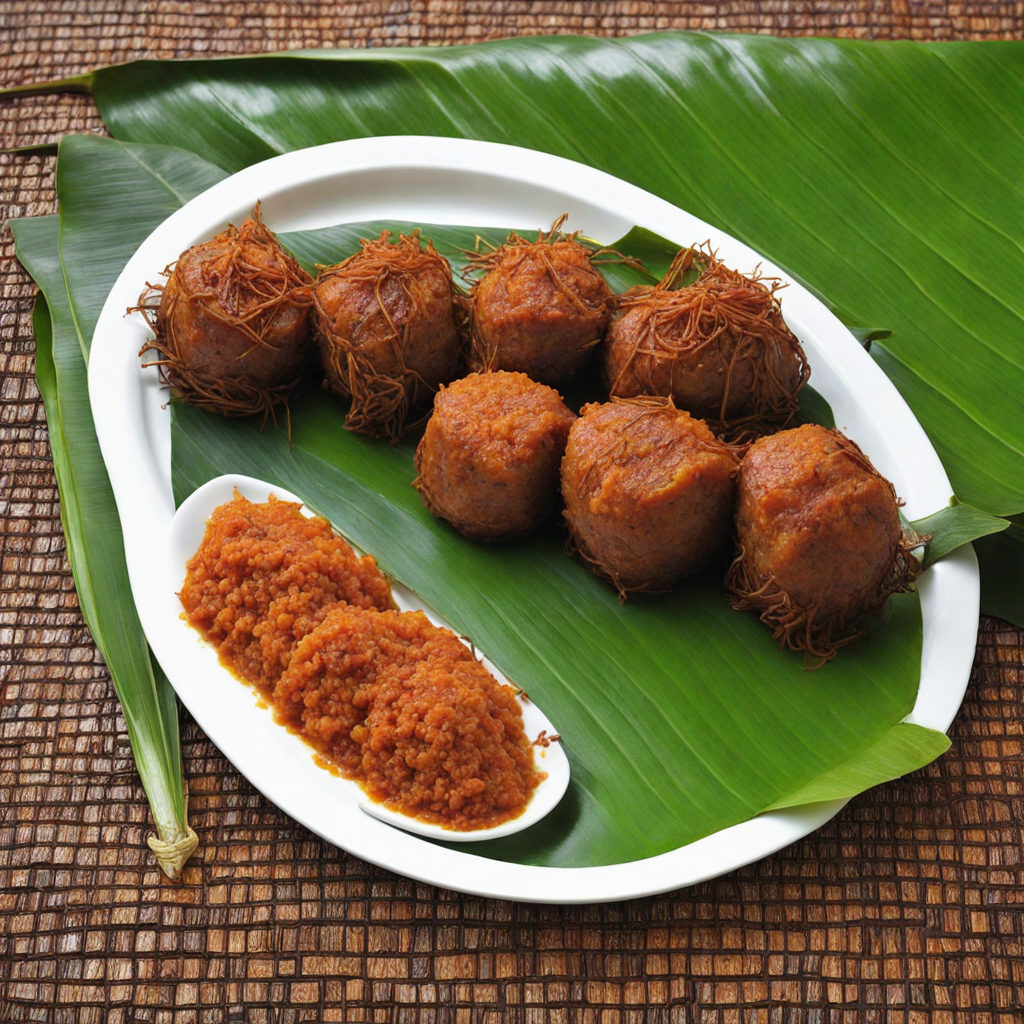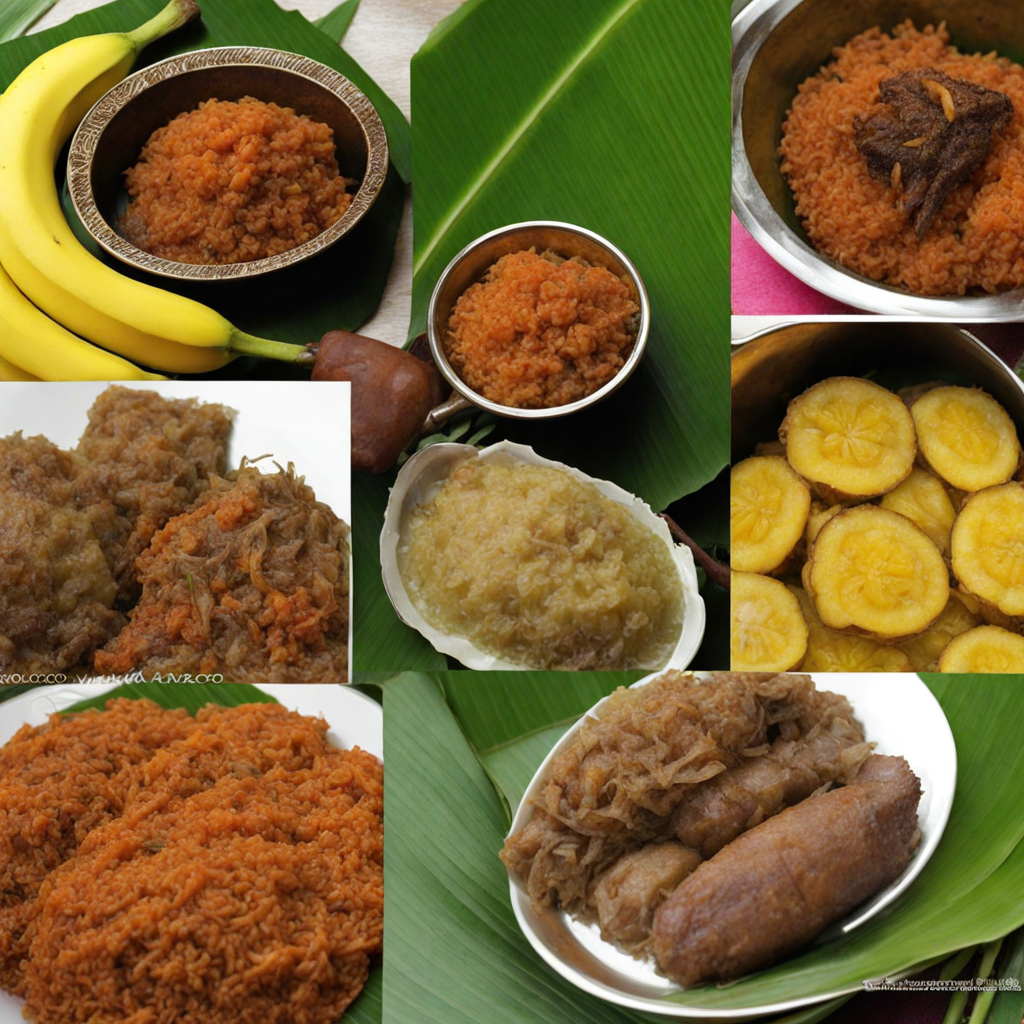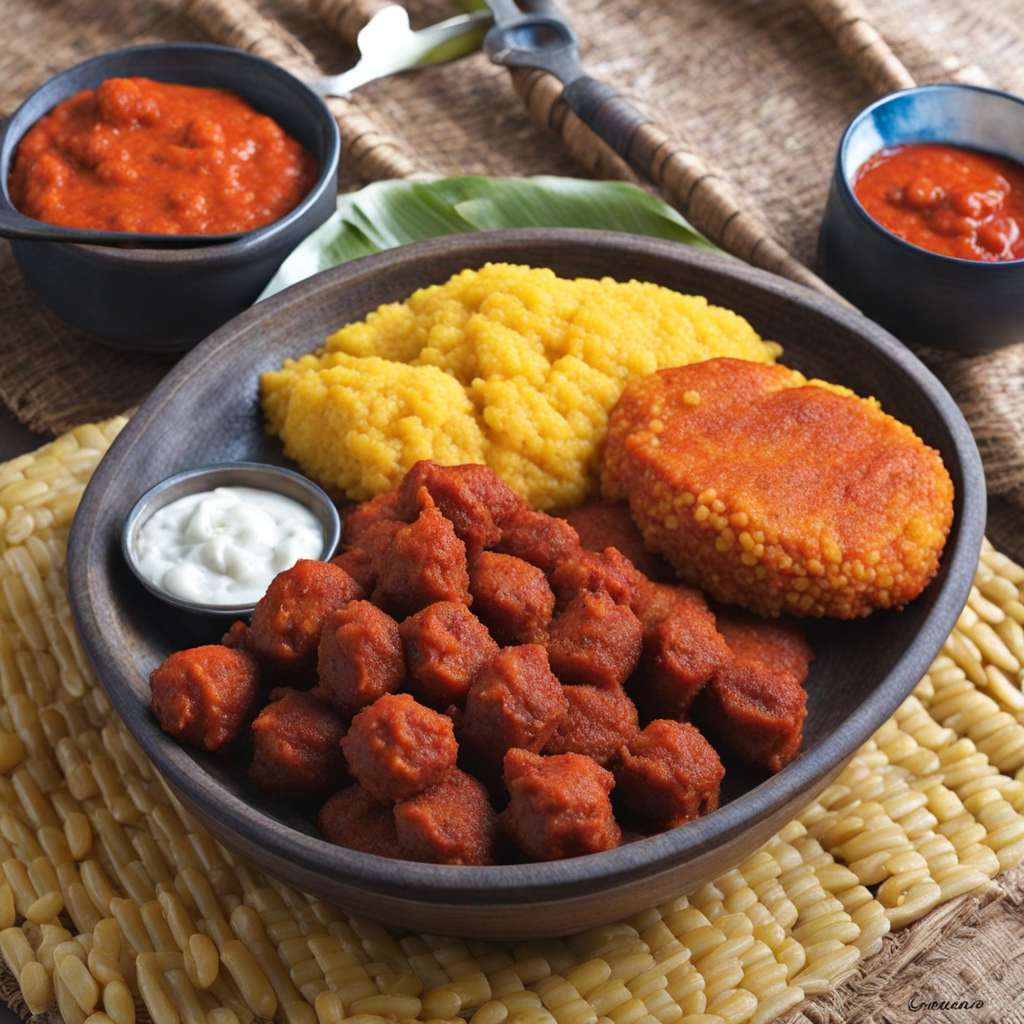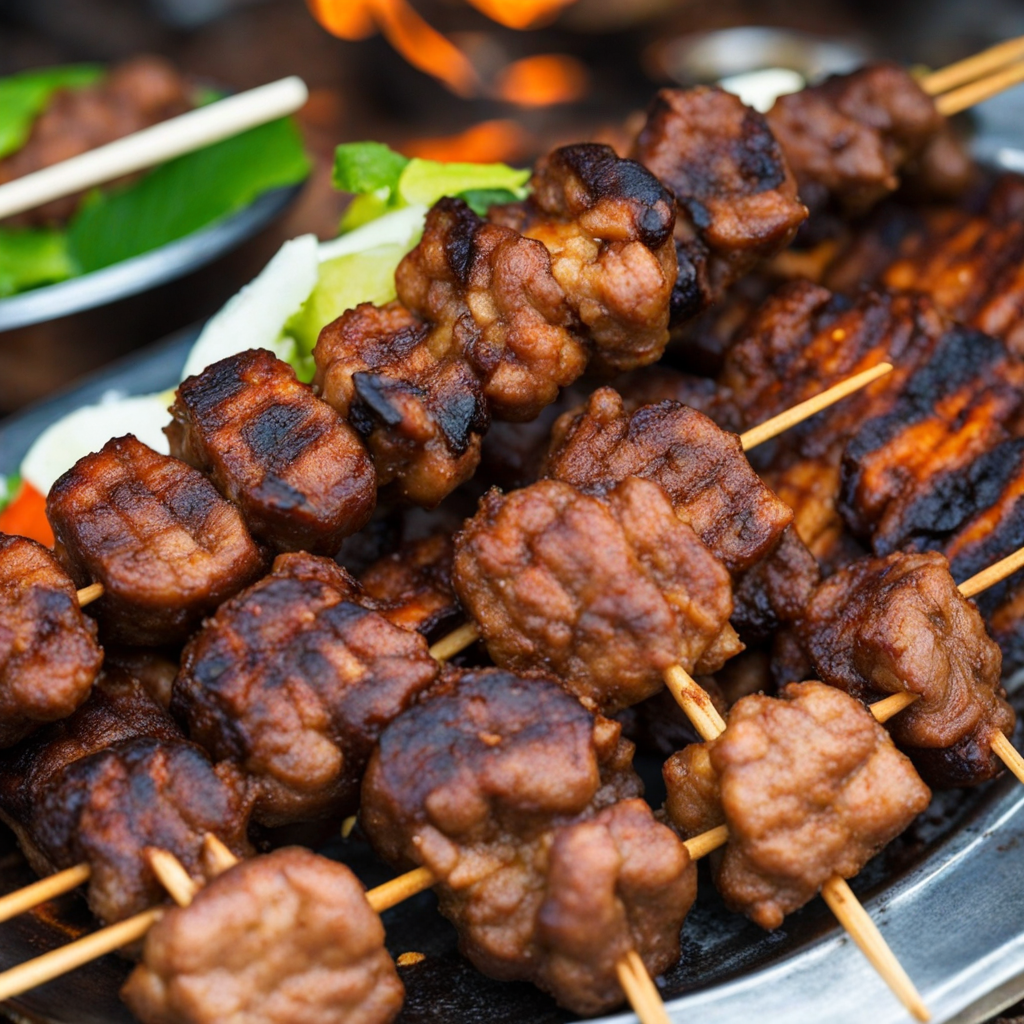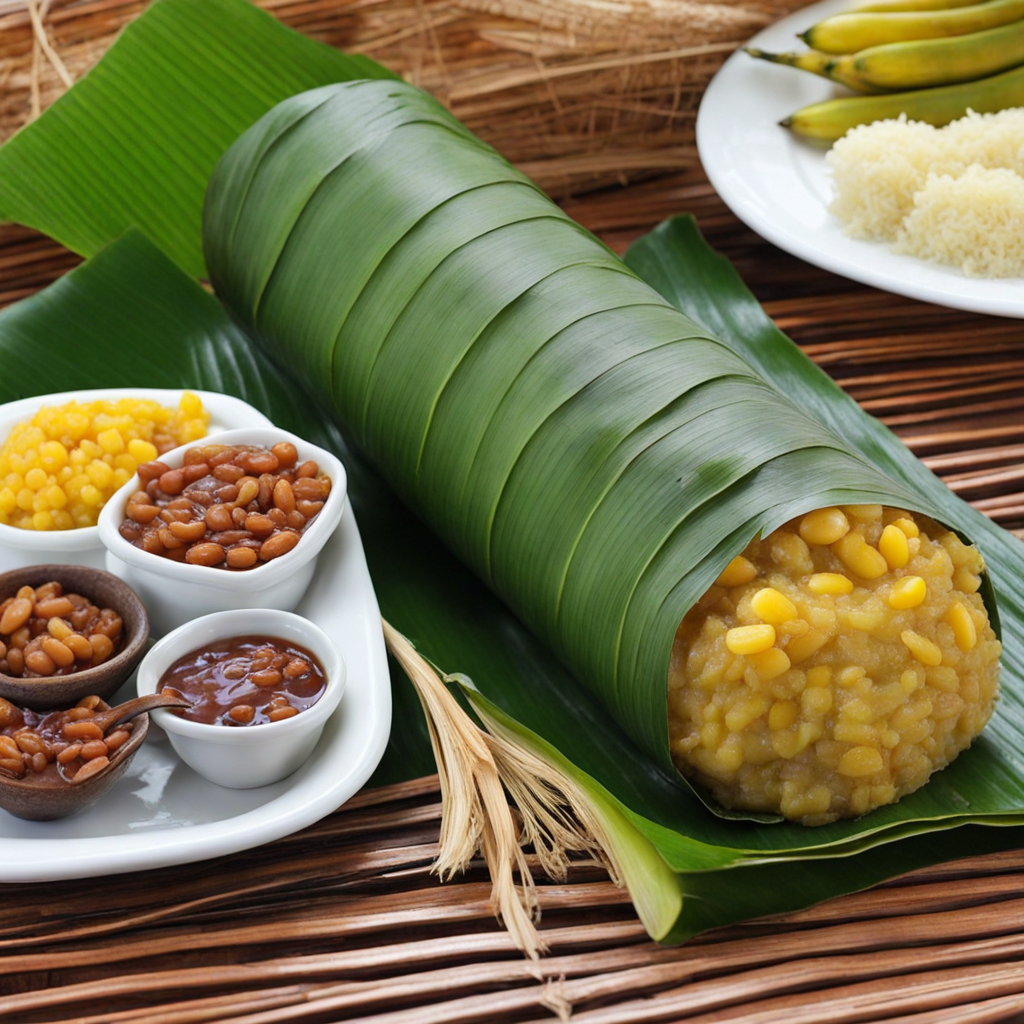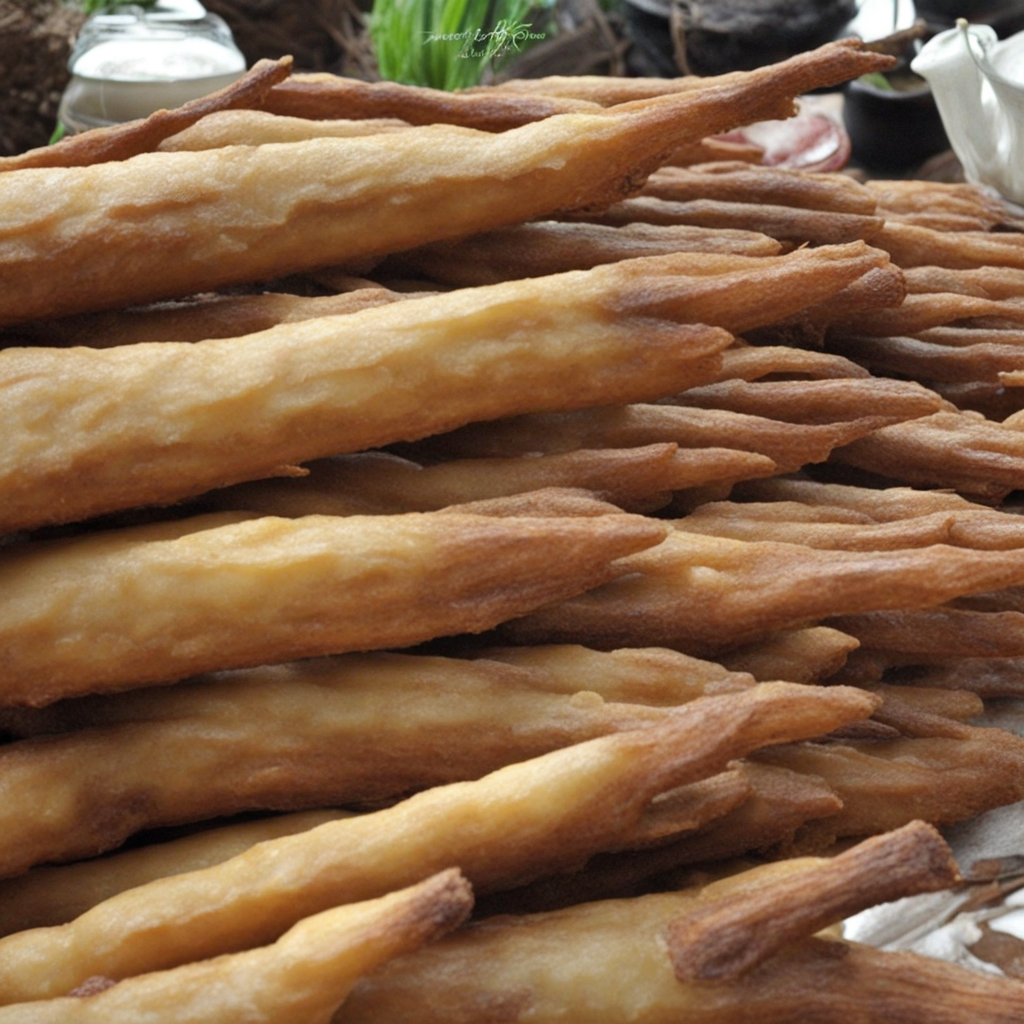Kwacoco Bible
Kwacoco Bible is a traditional dish from the southwestern regions of Cameroon, particularly among the Bakweri people. This unique culinary creation is primarily made from grated cocoyams, which are starchy tubers that lend a rich, earthy flavor to the dish. The cocoyams are mixed with a variety of ingredients, including palm oil, smoked fish, and an array of spices, which contribute to a depth of flavor that is both comforting and complex. The dish is typically wrapped in large, green banana leaves, which not only adds a subtle, aromatic essence during the cooking process but also serves as a natural, biodegradable serving vessel, embodying the connection to the land and local traditions. The preparation of Kwacoco Bible is a labor of love, often involving a communal effort in its creation. The cocoyams are grated and combined with the other ingredients before being meticulously wrapped in banana leaves and steamed to perfection. The result is a vibrant, moist dish that showcases the natural sweetness of the cocoyams, complemented by the savory notes from the fish and the richness of the palm oil. Each bite offers a harmonious balance of textures and flavors, making it a delightful experience for the palate. Kwacoco Bible is more than just a meal; it is a cultural experience that encapsulates the spirit of Cameroonian hospitality. It is often served at celebrations, family gatherings, and special occasions, symbolizing unity and shared joy. The dish can be enjoyed on its own or paired with a side of spicy sauce, enhancing its already tantalizing flavor profile. For those looking to explore new culinary horizons, Kwacoco Bible presents an authentic taste of Cameroon that is sure to leave a lasting impression.
How It Became This Dish
Kwacoco Bible: A Culinary Journey Through Cameroon Kwacoco Bible, often referred to simply as Kwacoco, is a traditional Cameroonian dish that embodies the rich cultural heritage and culinary diversity of the region. This unique dish, which translates to "the yam that speaks," is not just a food item; it is a symbol of social identity, communal bonds, and a reflection of the agricultural practices prevalent among the people of the Southwest region of Cameroon, particularly among the Bakweri and Bantu ethnic groups. Origins and Ingredients The roots of Kwacoco Bible can be traced back centuries, originating from the lush, fertile volcanic soils of Mount Cameroon, which provide the ideal environment for the cultivation of yams. Yams, a staple food in many West African cultures, are at the heart of this dish. The primary ingredient, cocoyam (or taro), is often utilized, paired with a variety of spices, palm oil, and sometimes fish or meat, depending on local availability and personal preference. The preparation of Kwacoco Bible is a labor-intensive process that reflects the communal spirit of the communities that create it. Traditionally, women gather to grate or pound the cocoyam and mix it with seasonings, creating a thick batter. This mixture is then wrapped in banana leaves and steamed, allowing the flavors to meld together. The resulting dish is a dense, pudding-like cake that is often enjoyed with spicy sauces or served alongside meat and vegetable stews. Cultural Significance Kwacoco Bible is more than just a meal; it is a significant aspect of social and cultural life in Cameroon. The dish is often associated with communal gatherings, celebrations, and rituals. For instance, during weddings, traditional ceremonies, and festivals, Kwacoco Bible is a staple, symbolizing prosperity and communal unity. The act of preparing Kwacoco is typically a communal effort, fostering bonds among women who gather to cook and share stories, reinforcing the importance of social ties within the community. The name “Kwacoco Bible” itself carries a deep meaning. The term “Bible” signifies the importance of the dish within the cultural narrative—it is akin to a sacred text, embodying the traditions and values of the people. In many ways, the dish serves as a vessel for storytelling, where each bite is steeped in the history and legacy of the community. Development Over Time As Cameroon has evolved, so too has the Kwacoco Bible. While the traditional preparation methods persist, modern influences have led to variations in the dish. Urbanization and globalization have introduced new ingredients and cooking techniques, allowing for a fusion of flavors that cater to contemporary palates. In urban centers like Douala and Yaoundé, chefs and home cooks alike experiment with Kwacoco, incorporating elements such as seafood or different types of vegetables, thus broadening its appeal. Additionally, the rise of culinary tourism has brought Kwacoco Bible into the spotlight. As visitors seek authentic experiences, local chefs and restaurants have embraced the opportunity to showcase this traditional dish, integrating it into their menus. This exposure has not only elevated the status of Kwacoco Bible but has also sparked interest in the broader spectrum of Cameroonian cuisine, encouraging a revival of interest in traditional cooking practices. Regional Variations Kwacoco Bible is not uniform across Cameroon; different regions have their unique interpretations of the dish. In the Littoral and Southwest regions, for example, the dish may be prepared with the addition of smoked fish or meat, enhancing its flavor profile. In contrast, other areas might incorporate more vegetables or use different types of starchy roots, showcasing the adaptability of the dish to local ingredients. Moreover, the method of cooking can vary significantly. While steaming in banana leaves is the traditional approach, some modern adaptations involve baking or using contemporary cooking appliances, making it more accessible to a broader audience. These variations highlight the dynamic nature of Kwacoco Bible as it continues to evolve while maintaining its cultural essence. Kwacoco Bible in Contemporary Society In contemporary Cameroon, Kwacoco Bible stands as a testament to the resilience of cultural identity amid globalization. It serves as a reminder of the importance of traditional foodways in fostering community, preserving history, and promoting local agriculture. As interest in sustainable and locally sourced foods grows, Kwacoco Bible aligns perfectly with these values, encouraging the use of locally grown ingredients and traditional farming practices. In recent years, there has also been a burgeoning movement among young chefs and food enthusiasts to explore and elevate traditional Cameroonian dishes, including Kwacoco Bible. This has led to innovative presentations and culinary experiences that honor the dish's roots while appealing to modern tastes. Workshops and cooking classes focused on traditional practices are becoming more common, ensuring that the knowledge and skills required to prepare Kwacoco Bible are passed down to future generations. Conclusion Kwacoco Bible is more than just a dish; it is a cultural artifact that captures the essence of Cameroonian identity. Its rich history, communal significance, and adaptability to changing times reflect the resilience and creativity of the people who cherish it. As Cameroon continues to navigate the complexities of modernity, Kwacoco Bible remains a vital link to the past, a source of pride, and an enduring symbol of the country’s vibrant culinary landscape. As we savor the flavors of Kwacoco Bible, we partake in a larger narrative—a story of community, heritage, and the unbreakable bonds that food can forge. In every bite, there lies a history worth celebrating, a testament to the enduring legacy of Cameroonian culture.
You may like
Discover local flavors from Cameroon


